Health bowl recipes are a fantastic way to create satisfying and nutritious meals that are both delicious and visually appealing. These bowls are a versatile canvas for your culinary creativity, allowing you to combine a variety of fresh, seasonal ingredients in a balanced and flavorful way.
Whether you’re looking for a quick breakfast, a light lunch, or a hearty dinner, health bowls offer a customizable solution that caters to diverse dietary needs and preferences. The beauty of health bowls lies in their flexibility, allowing you to experiment with different flavor combinations, protein sources, grains, vegetables, and toppings to create a unique and personalized experience with every bowl.
What is a Health Bowl?
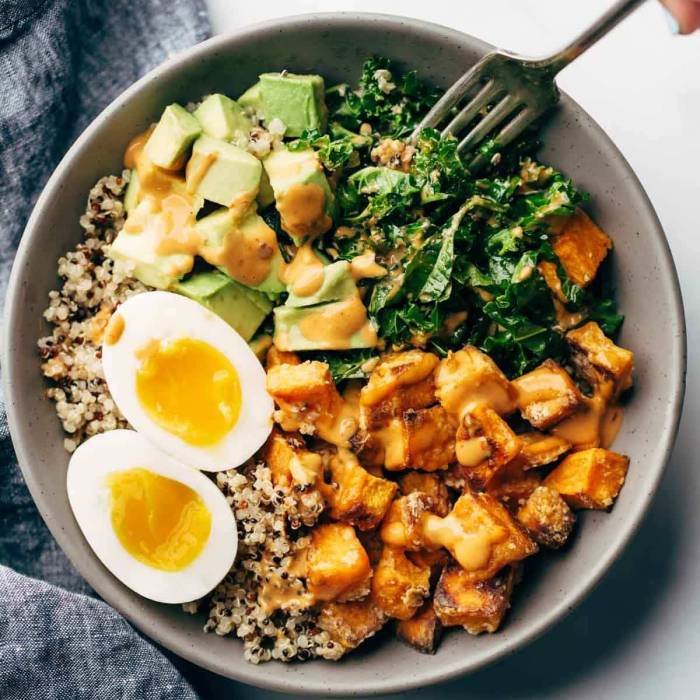
Health bowls are a trendy and nutritious way to enjoy a meal, offering a delicious and balanced combination of ingredients in a single bowl. They are a popular choice for breakfast, lunch, or dinner, catering to various dietary needs and preferences.
Nutritional Benefits of Health Bowls
Health bowls are a fantastic source of essential nutrients, promoting overall well-being. They are typically packed with a variety of fresh, whole foods, including:
- Fruits and Vegetables:Providing vitamins, minerals, antioxidants, and fiber, contributing to a healthy digestive system and boosting immunity.
- Whole Grains:Offering complex carbohydrates, fiber, and essential nutrients, providing sustained energy levels and supporting blood sugar regulation.
- Lean Protein:Supporting muscle growth and repair, promoting satiety, and contributing to a balanced diet.
- Healthy Fats:Essential for hormone production, cell function, and absorption of fat-soluble vitamins. They also provide satiety and support heart health.
These ingredients work together to create a satisfying and nourishing meal, providing a balance of macronutrients and essential vitamins and minerals.
Types of Health Bowls
Health bowls can be customized to suit individual preferences and dietary needs. Here are some examples of different types of health bowls:
- Breakfast Bowls:Often include overnight oats, yogurt, chia seeds, fruits, nuts, and granola, providing a nutritious and energy-boosting start to the day.
- Lunch Bowls:Can feature quinoa, brown rice, or other whole grains, along with roasted vegetables, grilled chicken or fish, and a flavorful dressing, offering a satisfying and balanced meal.
- Dinner Bowls:Can include roasted sweet potatoes, chickpeas, kale, avocado, and a protein source like tofu or tempeh, creating a flavorful and nutrient-rich meal.
Health Bowl Ingredients
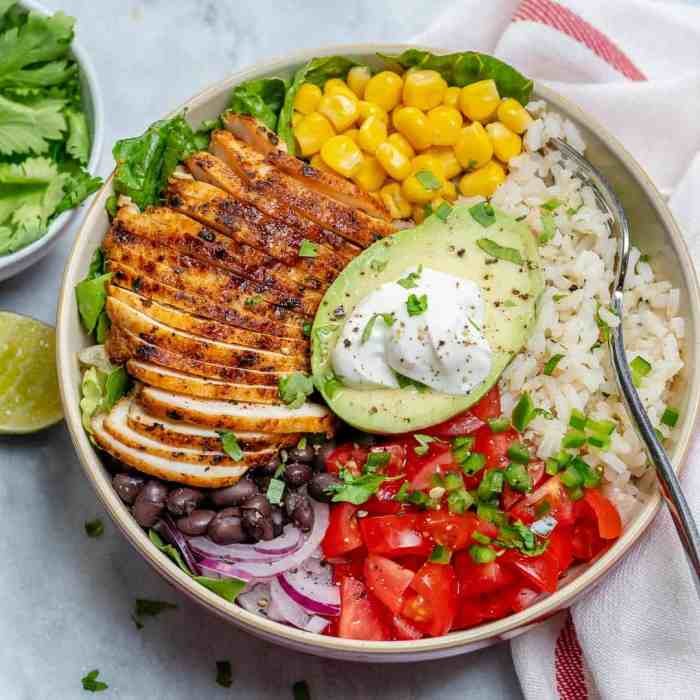
Health bowls are a versatile and customizable meal option, allowing you to create a delicious and nutritious combination of ingredients. Here’s a breakdown of the common ingredients, categorized by food group, to inspire your own creations.
Choosing Protein Sources
Protein is an essential component of a health bowl, providing satiety and essential nutrients. There are numerous options to choose from, catering to different dietary preferences and nutritional needs.
- Plant-based proteins: Lentils, chickpeas, black beans, tofu, tempeh, edamame, and quinoa are excellent sources of plant-based protein. These options are also rich in fiber, iron, and other essential vitamins and minerals.
- Animal-based proteins: Grilled chicken, salmon, tuna, shrimp, and eggs are popular choices for animal-based protein. These options provide a good source of lean protein and healthy fats.
Selecting Grains
Grains form the base of a health bowl, providing complex carbohydrates for sustained energy.
- Whole grains: Brown rice, quinoa, farro, barley, and wild rice are excellent sources of fiber, vitamins, and minerals. These grains offer a slow-release energy source, keeping you feeling full and satisfied for longer.
- Other grains: While not as nutrient-dense as whole grains, options like white rice, couscous, and pasta can still be incorporated into a health bowl. However, it’s best to limit their consumption and opt for whole grain varieties whenever possible.
Including Vegetables
Vegetables add a vibrant burst of flavor, color, and nutrients to your health bowl.
- Leafy greens: Spinach, kale, romaine lettuce, and arugula are excellent sources of vitamins, minerals, and antioxidants. These greens add a fresh and earthy flavor to your bowl.
- Other vegetables: Broccoli, carrots, bell peppers, zucchini, sweet potatoes, and avocado are versatile options that can be roasted, grilled, or added raw to your bowl. Choose a variety of colors to ensure a diverse range of nutrients.
Choosing Toppings, Health bowl recipe
Toppings add a final touch of flavor and texture to your health bowl.
- Nuts and seeds: Almonds, walnuts, chia seeds, flax seeds, and pumpkin seeds provide healthy fats, protein, and fiber. They also add a satisfying crunch to your bowl.
- Fruits: Berries, mango, pineapple, and banana add sweetness and freshness to your bowl. Choose seasonal fruits for optimal flavor and nutrient content.
- Dressings and sauces: A drizzle of olive oil, lemon juice, tahini dressing, or a flavorful vinaigrette can enhance the taste of your bowl. Choose healthy options that are low in sugar and sodium.
Building a Health Bowl Recipe
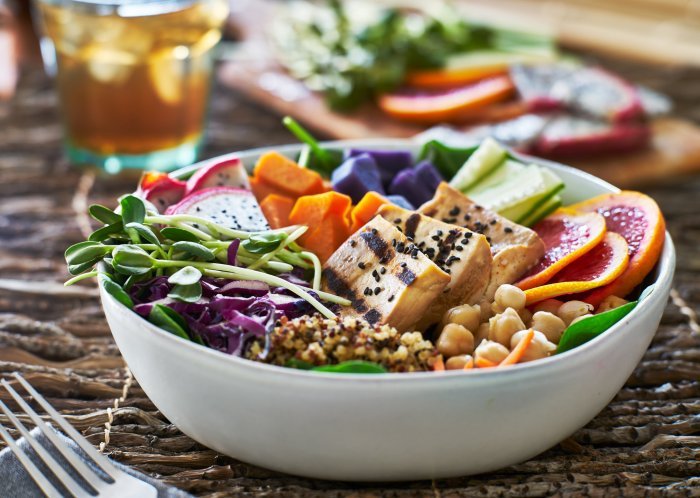
Creating a health bowl recipe is a fun and flexible way to enjoy a nutritious and delicious meal. You can tailor your bowl to your dietary needs and preferences, making it a perfect option for breakfast, lunch, or dinner.
Basic Health Bowl Recipe Template
A basic health bowl recipe consists of several key components:
- Base:The base of your health bowl provides the foundation for your meal. It can be a grain, such as quinoa, rice, or farro, or a leafy green, such as spinach or kale.
- Protein:Protein adds satiety and helps to build and repair tissues. You can choose from a variety of sources, including beans, lentils, tofu, tempeh, chicken, fish, or eggs.
- Vegetables:Vegetables provide essential vitamins, minerals, and fiber. Choose a variety of colors and textures to create a visually appealing and nutritious bowl.
- Healthy Fats:Healthy fats, such as avocado, nuts, seeds, or olive oil, add flavor and contribute to heart health.
- Toppings:Toppings add a burst of flavor and texture to your health bowl. Some popular options include fresh herbs, spices, sauces, and crunchy elements like nuts or seeds.
Flavor Combinations and Dietary Restrictions
Here are some examples of flavor combinations and dietary restrictions to inspire your creativity:
- Mediterranean:Quinoa base, chickpeas, grilled chicken or tofu, cucumber, tomatoes, olives, feta cheese, lemon dressing, and fresh parsley. This recipe can be made vegan by omitting the feta cheese and substituting it with a vegan alternative.
- Asian-Inspired:Brown rice base, edamame, stir-fried tofu or tempeh, shredded carrots, bell peppers, broccoli florets, sesame seeds, soy sauce, and sriracha. This recipe is naturally vegan and gluten-free.
- Tropical:Spinach base, black beans, grilled chicken or tofu, mango, pineapple, avocado, cilantro, lime juice, and a sprinkle of toasted coconut flakes. This recipe can be made vegan by omitting the chicken or tofu and using a vegan alternative.
Balancing Macronutrients and Micronutrients
Balancing macronutrients (proteins, carbohydrates, and fats) and micronutrients (vitamins and minerals) is crucial for optimal health.
A well-balanced health bowl should include a good source of protein, complex carbohydrates, healthy fats, and a variety of fruits and vegetables.
This approach ensures you’re providing your body with the necessary nutrients for energy, growth, and repair. For example, quinoa is a complete protein source, providing all nine essential amino acids.
A health bowl recipe is a great way to start your day with a nutritious and delicious meal. It can be a fantastic way to incorporate a variety of fruits, vegetables, and grains, which are all important for maintaining good health.
You can even add a sprinkle of nuts or seeds for added crunch and flavor. Speaking of healthy choices, did you know that there’s a growing body of work in film that explores mental health? Check out this resource on film mental health for more information.
Once you’ve learned more about the topic, you can create a health bowl recipe that not only nourishes your body but also helps you feel more balanced and mindful.
Health Bowl Presentation
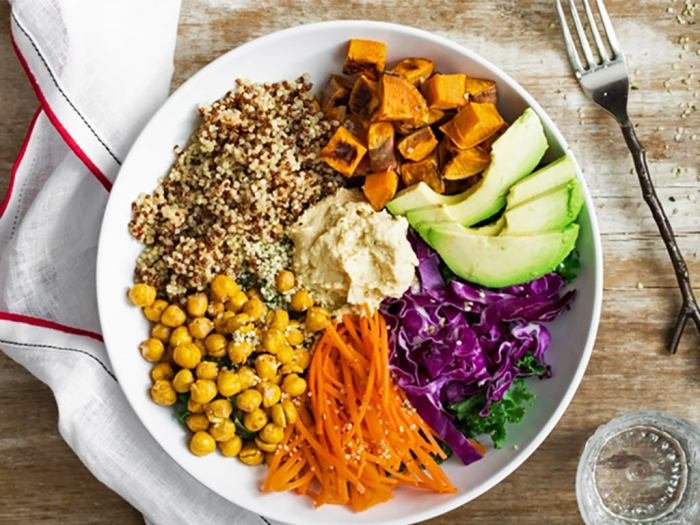
A visually appealing health bowl can elevate your culinary creation to a whole new level. It’s not just about taste; it’s about creating a sensory experience that engages your sight and stimulates your appetite.
Garnishing and Arranging Ingredients
Garnishing and arranging ingredients are essential for a visually appealing health bowl. The goal is to create a balanced and harmonious presentation that highlights the colors, textures, and flavors of the ingredients.
A healthy bowl recipe is a great way to get a nutritious and satisfying meal. Tepeyac Community Health Center, tepeyac community health center , is a fantastic resource for those looking for information on healthy eating and lifestyle choices.
You can incorporate fresh vegetables, lean protein, and whole grains into your health bowl recipes to create a meal that is both delicious and good for you.
- Use contrasting colors:Employ a vibrant palette of colors to create visual interest. For instance, pair bright red tomatoes with green spinach and vibrant orange bell peppers.
- Layer ingredients:Arrange ingredients in layers, starting with the base and building upwards. This allows for a more visually appealing presentation and also ensures that each ingredient is visible.
- Add height and texture:Incorporate ingredients with different textures and heights to add visual interest. For example, you can use chopped nuts, seeds, or crumbled cheese for added crunch and texture.
- Garnish strategically:Garnishes can add a touch of elegance and enhance the visual appeal of your bowl. Use fresh herbs, edible flowers, or a sprinkle of spices for a finishing touch.
Visual Description of a Health Bowl
Imagine a vibrant health bowl bursting with color and texture. The base might be a bed of mixed greens, featuring spinach, kale, and romaine lettuce. Atop this foundation, a medley of colorful vegetables, such as diced bell peppers, shredded carrots, and sliced cucumbers, adds a pop of vibrancy.
A sprinkle of quinoa or brown rice provides a hearty base, while a drizzle of a flavorful dressing adds a touch of richness and shine. The bowl is then adorned with a scattering of toasted nuts, seeds, and fresh herbs for a final touch of visual appeal.
Health Bowl Storage and Reheating
Health bowls are a fantastic option for meal prepping, but proper storage and reheating are crucial to maintain their freshness and nutritional value. This section will guide you through the best practices for storing and reheating your health bowls, ensuring you enjoy a delicious and nutritious meal whenever you’re ready.
Storing Health Bowls
Storing health bowls correctly is vital to prevent the ingredients from becoming soggy or losing their flavor. Here are some tips:
- Separate Components:To avoid soggy ingredients, store the components of your health bowl separately. This means keeping the base, like grains or greens, in one container, and the toppings like protein, vegetables, and dressing in separate containers.
- Use Airtight Containers:Airtight containers help preserve freshness and prevent oxidation. This is especially important for ingredients like avocado, nuts, and seeds, which can quickly turn brown or rancid when exposed to air.
- Refrigerate:Store your prepared health bowl components in the refrigerator for up to 3-4 days. However, it’s best to consume them within 24 hours for optimal freshness and taste.
Reheating Health Bowls
Reheating your health bowl is an art form, ensuring that it retains its flavor, texture, and nutritional value.
- Microwave Reheating:While convenient, microwaving can sometimes make ingredients soggy or dry out. If you choose this method, use a microwave-safe container with a lid to prevent splattering. Heat the base and toppings separately to maintain their individual textures.
- Oven Reheating:For a more even and gentle reheating, consider using the oven. Preheat your oven to 350°F (175°C) and place the health bowl components in an oven-safe dish. Cover with aluminum foil to prevent drying out.
- Skillet Reheating:For a more flavorful and crispy experience, try reheating your health bowl in a skillet. Heat a little oil or water in the skillet and add the base, like quinoa or rice, to warm through. Then, add the toppings, such as roasted vegetables or grilled chicken, to heat them separately.
Meal Prepping Tips
Meal prepping health bowls can save you time and ensure you have healthy, satisfying meals ready to go.
A health bowl recipe can be a great way to start your day, packed with nutrients and flavor. If you’re looking for more inspiration, consider visiting texas health presbyterian hospital dallas for their wellness programs and resources. They often offer tips on healthy eating and can help you create a meal plan that fits your needs.
With a little creativity, you can make a health bowl recipe that is both delicious and nourishing.
- Cook in Bulk:Prepare large batches of your base ingredients, such as quinoa, brown rice, or roasted vegetables, to make assembling your health bowls quicker.
- Prepare Toppings Ahead:Chop and roast vegetables, grill protein, or prepare your favorite dressings in advance. Store them in separate containers for easy assembly.
- Assemble and Store:Once your base and toppings are ready, assemble your health bowls in separate containers. This allows you to quickly grab a meal and reheat it when needed.
End of Discussion
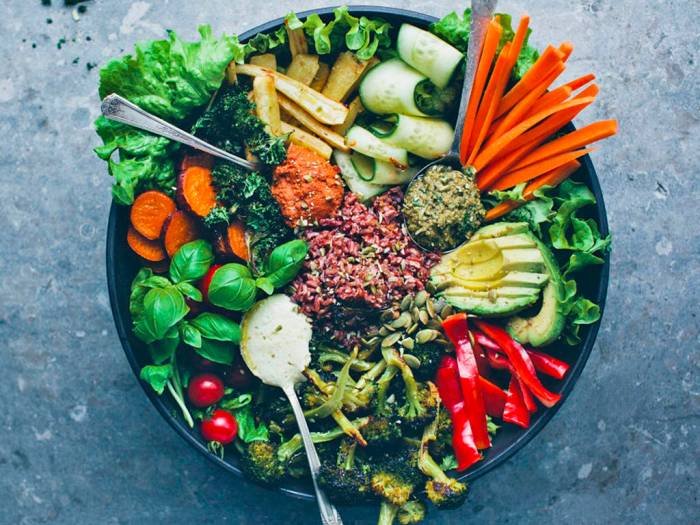
From the basic building blocks of a health bowl to the endless variations and presentation tips, this guide provides a comprehensive overview of everything you need to know to create your own healthy and delicious bowls. Embrace the freedom to experiment, get creative with your ingredients, and enjoy the satisfaction of crafting meals that are as nourishing as they are visually appealing.
Essential Questionnaire
What are the best protein sources for health bowls?
You can use a variety of protein sources for your health bowls, including grilled chicken, tofu, chickpeas, lentils, quinoa, and eggs.
How can I make my health bowls more flavorful?
Experiment with different spices, sauces, and dressings to add depth and complexity to your bowls. For example, try adding a drizzle of tahini dressing, a sprinkle of chili flakes, or a squeeze of lime juice.
Can I make health bowls ahead of time?
Absolutely! Health bowls are perfect for meal prepping. Prepare the ingredients in advance and store them separately in the refrigerator. When you’re ready to eat, assemble your bowl and enjoy.